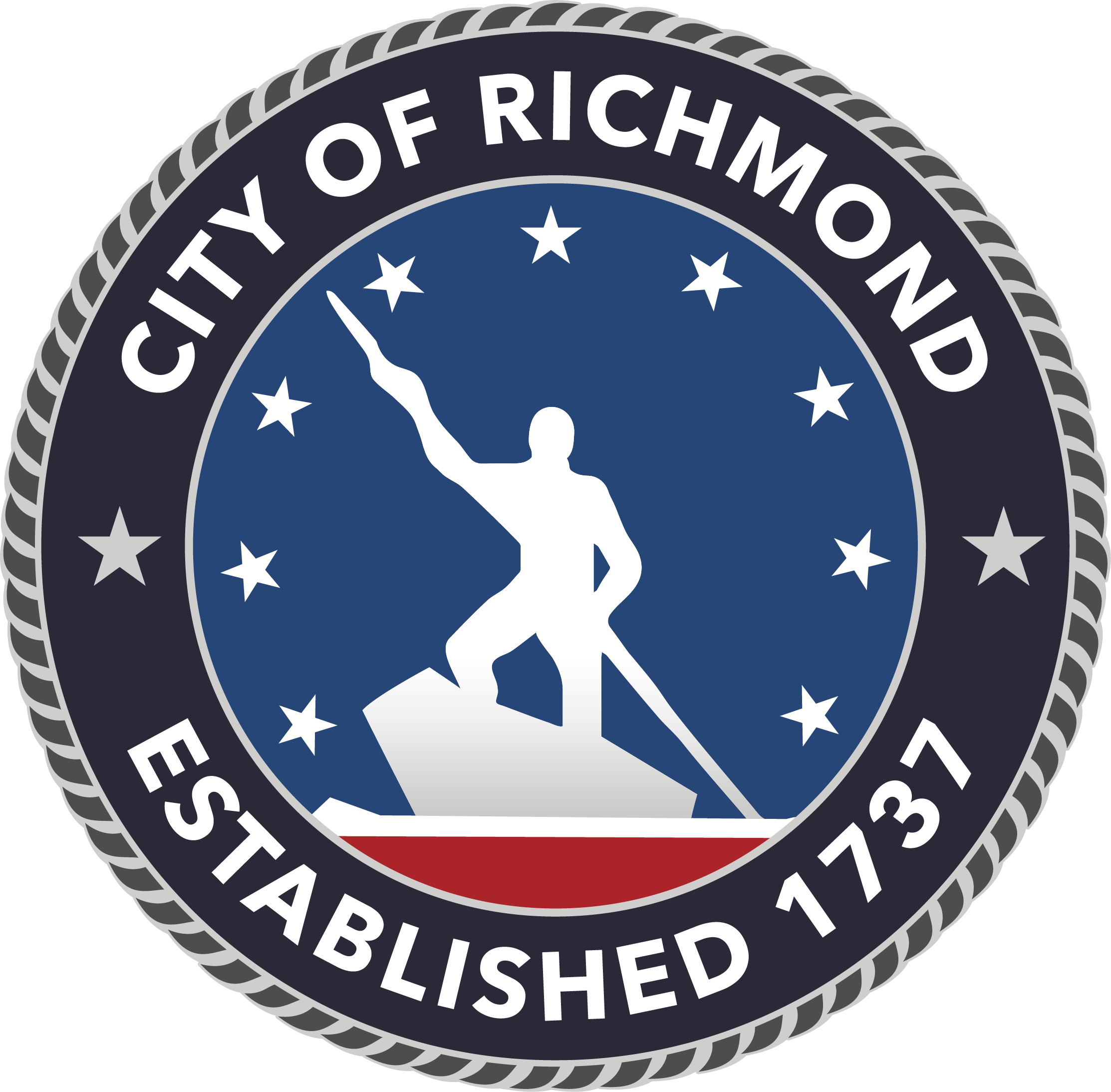Click HERE to apply for Parks & Recreation jobs.
Cemeteries Administrative Office
1401 S. Randolph Street
Richmond, VA 23220
Map It
(804) 646-1401
Notice to Lot Owners
Reminder: In accordance with the City Code, all flowers, floral arrangements, decorations, and wreaths, including those placed on top of monuments and not secured in a flower saddle, must be removed by the lot owner no later than March 1 of each year in all City-owned cemeteries.
These items may be returned to the cemetery on or after the third Saturday in March.
Per City Code, any items left on the ground after March 1 are subject to removal and disposal by cemetery staff. The Cemeteries Division of the Department of Parks, Recreation, and Community Facilities will conduct cemetery cleanup operations every six weeks, removing any items that do not comply with the Code.
City-owned cemeteries include Barton Heights, Shockoe Hill, Shockoe Hill African Burying Ground, Oakwood, Riverview, Maury, East End, Evergreen, Forest View, St. John's, and Mt. Olivet.
QUESTIONS?
Call 804-646-1401 or 804-646-1402, Monday - Friday 8 a.m. - 4 p.m.
Active Cemeteries:
| Location | Address | Location / Quadrant | Telephone |
|---|---|---|---|
| Maury and Mt. Olivet |
2700 Maury Street, Richmond, VA 23224-3670 | South Side | (804) 646-8259 |
| Oakwood |
3101 Nine Mile Road, Richmond, VA 23223-5454 | East End | (804) 646-4473 |
| Riverview |
1401 S. Randolph Street, Richmond, VA 23220-6712 | West End | (804) 646-1291 |
Public Visiting Hours: Sunrise to sunset daily
Cemetery Fees
PRCF Cemeteries Charges and Fees
Historic Cemeteries:
Parks, Recreation and Community Facilities operate seven municipal cemeteries. Although all of the cemeteries have historical interest, these are particularly noteworthy are the following:
Barton Heights Cemetery:
The Barton Heights Cemeteries were established in 1815 by a group of Free Black Richmond residents known as the “Burying Ground Society of the Free People of Color” and comprise a 12.76-acre collection of six distinct cemeteries, serving as the final resting place of thousands of African Americans. The cemeteries provided an alternative to Shockoe Bottom’s “Burial Ground for Negroes.” These cemeteries were active between 1815 and 1904 and include Cedarwood Cemetery (formerly Phoenix Cemetery), Union Mechanics (formerly Union Burial Ground), Methodist, Sycamore, Ebenezer, and the Sons and Daughters of Ham burial grounds. The cemeteries are the final resting place for Richmond notaries, including former Richmond City Councilmen Josiah Crump, Joseph E. Farrar, and Richard G. Forrester, Richmond Poet and Paster D.W. Davis, and Richmond Social Reformer and Civil Leader Lucy Goode Brooks. The Barton Cemeteries are located between St. James Street and Lamb Avenue and are on the Virginia Landmarks Registry and the National Register of Historic Places.
For more information, contact the Descendants Council of Greater RVA at descendantscouncilva@gmail.com
Colored Paupers Cemetery (Garden of Lilies):
This historic 4.59-acre cemetery was established in 1895 by William Forrester as part of Greenwood Memorial Cemetery, now known as Oakwood Cemetery. Affectionately called the Garden of Lilies, this sacred burial ground is the final resting place for children (infants to age 12) who lived in orphanages, asylums, hospitals, or on the streets of Richmond. It is named in tribute to the delicate lives it holds.
Shockoe Hill African Burying Ground:
The Shockoe Hill African Burying Ground, established by the City of Richmond in 1816, served as a final resting place for both free and enslaved African Americans until its closure in 1879. It is believed to contain the remains of more than 22,000 individuals, making it one of the most extensive African burial grounds in the United States.
The historic footprint of the burying ground once spanned approximately 31 acres. Today, the City of Richmond owns a 1.2-acre parcel at 1305 N. 5th Street. In November 2024, this parcel was formally designated as an official cemetery by the Richmond City Council (Ordinance No. 2024-285). This designation ensures the land will be preserved both as a historic African American cemetery and as a public green space. The remainder of the original site is divided among various owners.
The history of the Shockoe Hill African Burying Ground is complex, marked not only by its vital role as a sacred burial ground but also by decades of neglect and desecration. Over time, infrastructure projects, including road construction and the expansion of I-64, encroached upon and disrupted the site. The city-owned parcel was previously used for commercial purposes, including a gas station and a billboard. Its recent recognition and protection as a cemetery represent an essential step toward honoring those interred and safeguarding the site for future generations.
East End Cemetery:
East End Cemetery is a historic African American burial ground. Originally incorporated as Greenwood Cemetery, it was founded in 1891 by a group of prominent African Americans in Richmond and was renamed East End Cemetery in 1897. The burial grounds straddle Henrico County and the City of Richmond and remained active until 2013. The site spans over 20 acres and serves as the final resting place of more than 17,500 African Americans, including some of Richmond’s most influential business owners, doctors, lawyers, educators, and community leaders.
For more information, contact the Friends of East End at https://www.facebook.com/eastendcemeteryproject/ or friendsofeastend@gmail.com.
Evergreen Cemetery:
Spanning 59 acres, Evergreen Cemetery is a historic African American burial ground founded by the Evergreen Cemetery Company in 1891, during the height of the Jim Crow era. It is located in Richmond’s east end on East Richmond Road and across from Stony Run Creek and adjoins East End Cemetery. It contains an estimated 20,000 to 50,000 burial plots, possibly more. It is the final resting place of some of Richmond’s most influential African Americans, including Mrs. Maggie L. Walker, Mr. John Mitchell, Jr., and Rev. J. Andrew Bowler.
Forest View Cemetery:
Located on Richmond’s Southside, Forest View Cemetery is believed to be a slave cemetery. It appeared on a 1898 map and is thought to be much older. A Geophysical Investigation Report identified 117 likely graves, possibly more. The location is registered with the Department of Historic Resources, but no grave markers or genealogical records exist to help tell its story.
For more information, contact the Friends of Forest at https://www.facebook.com/FriendsOfForestViewCemetery/ or friendsofforestviewcemetery@gmail.com
Shockoe Hill Cemetery:
Located in the downtown area of Richmond on Hospital Street. Within its grounds are buried such luminaries as John Marshall, the revered U.S. Supreme Court Justice; Elmira Shelton, said to be Edgar Allan Poe's fiancé and inspiration for the "Lost Lenore" of his poem, "The Raven"; John Allan, Poe's boyhood friend; Peter Francisco, the Revolutionary War Hero; 220 Confederate and 577 Union soldiers; and Elizabeth Van Lew, the Union spy who operated a "safe" house during the War Between the States. This cemetery is on the Virginia Landmarks Register and National Register of Historic Places.
For more information, please call (804) 646-1291 or visit the Friends of Shockoe Hill Cemetery.
Historic St. John's Church Cemetery:
Located on the grounds of St. John's Church, in Richmond's oldest neighborhood, Church Hill, at 24th and Broad Streets. The City owns the Broad Street side of the cemetery. The cemetery is the resting place of Elizabeth Arnold Poe, the mother of the famous poet, Edgar Allan Poe and George Wythe, one of the signers of our nation's Declaration of Independence. The church is the site of Patrick Henry's rousing, "Give me liberty or give me death!" speech.
The dates and times for reenactments Patrick Henry's famous speech can be obtained by calling St. John's Church at (804) 649-0263.
Active Cemeteries:
Oakwood Cemetery:
Located at 3101 Nine Mile Rd. It is the final resting place of 17,000 Confederate soldiers, casualties from several battles fought in the Richmond area during the War Between the States. According to information in the book entitled, "The Dahlgren Affair" by Duane Schultz, Yankee Colonel Dahlgren was buried in a secret grave in Oakwood Cemetery in March 1864 and removed by Elizabeth Van Lew under cover of night on April 6, 1864. The body was taken out of Richmond by Van Lew under a wagonload of peach trees and reburied the next day on a farm at Hungary Station. His body was returned to Philadelphia in October 1865 for burial in North Hill Cemetery. Office hours: Monday - Friday, 8 a.m. to 4 p.m. Genealogy by appointment only.
For more information, please call (804) 646-4473.
Riverview Cemetery:
The City of Richmond established Riverview Cemetery in 1887 with the purchase of 53 acres along the James River, immediately west of Hollywood Cemetery. The land, formerly known as Bankstown Farm, is adjacent to Mount Calvary Cemetery, a Roman Catholic burial ground.
Riverview Cemetery was expanded in 1923 and again in 1928, and today spans approximately 90 acres. The first burials took place in 1880 and over time, the cemetery developed distinct sections for various communities and organizations. These include burial areas for American Legionnaires, members of the Greek Orthodox and Armenian communities, and the Elks fraternal order.
In 1901, a section of the cemetery was donated to the Home for Needy Confederate Women. A separate area was later designated for residents of the Robert E. Lee Camp Confederate Soliders' Home. The cemetery also features a memorial section dedicated to veterans of the Spanish-American War. The site remained closed to African American burials until 1968, a fact that we acknowledge with sensitivity and respect.
Office hours are Monday- Friday, 8 a.m. to 4 p.m. Genealogy is by appointment only. For more information, please call 804-646-1291.
Maury and Mount Olivet Cemeteries:
Maury and Mount Olivet are contiguous cemeteries located on the south side of Richmond near the James River. They were established in 1874, two years after the town of Manchester prohibited private burials within its limits. This historical context is crucial as it explains why many remains previously interred within the town were relocated to Maury Cemetery, dating some grave markers as early as 1847, predating the official founding of the cemetery.
Together, the cemeteries cover approximately 82 acres. Maury Cemetery, names after Matthew Fountaine Maury, a Virginia born Confederate naval officer, scientist, and oceanographer, was opened exclusively as a whites-only burial ground.
Adjacent to Maury, the 20-acre parcel known today at Mount Olivet was initially designated as the burial ground for African Americans and was referred to simply as the "colored section". In 1910, the Love and Union Club, a Manchester based mutual aid society that provided illness and death benefits to African American members, formally petitioned the city to name this section Mount Olivet Cemetery; a request the city granted.
Office hours are Monday- Friday, 8 a.m. to 4 p.m. Genealogy is by appointment only. For more information, please call 804-646-8259.







